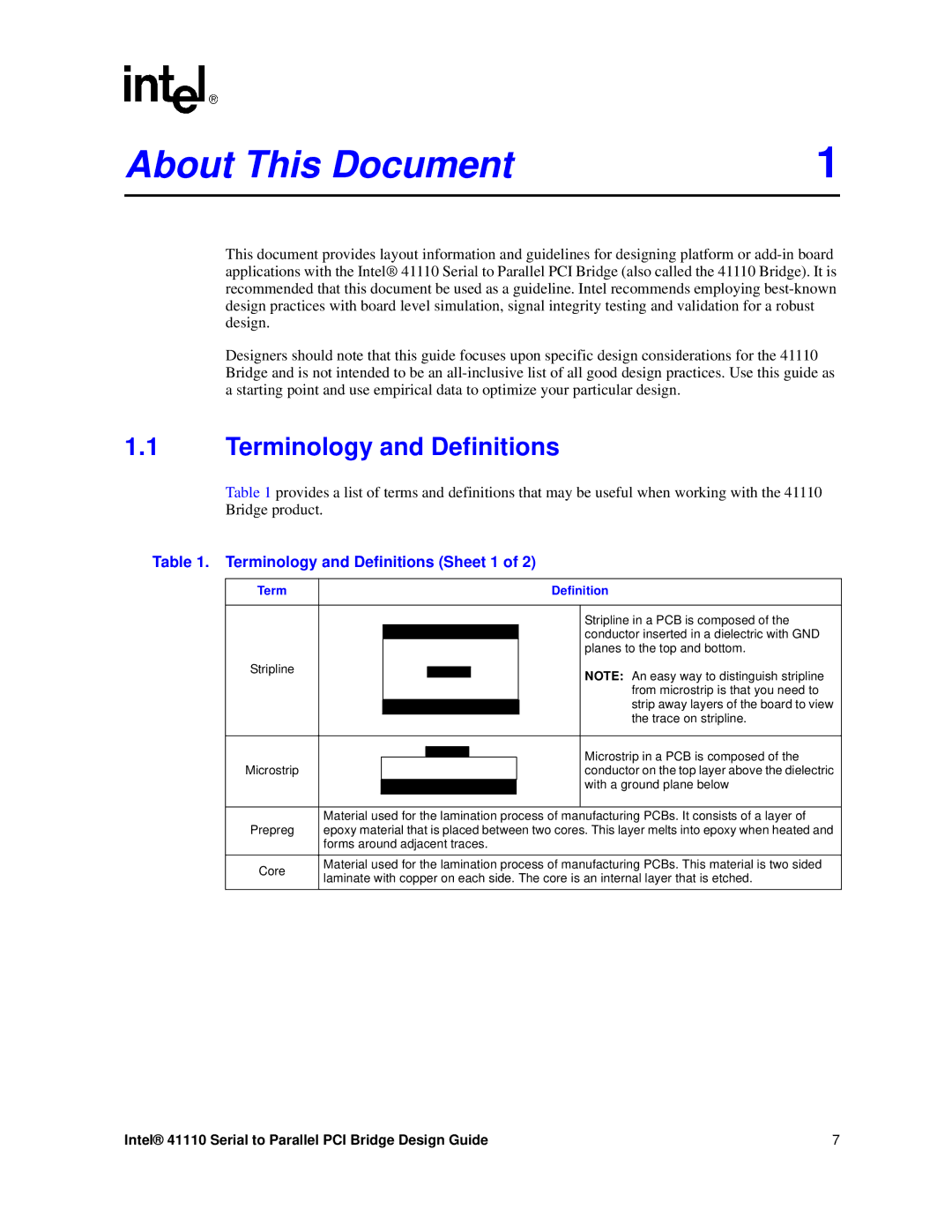About This Document | 1 |
This document provides layout information and guidelines for designing platform or
Designers should note that this guide focuses upon specific design considerations for the 41110 Bridge and is not intended to be an
1.1Terminology and Definitions
Table 1 provides a list of terms and definitions that may be useful when working with the 41110 Bridge product.
Table 1. Terminology and Definitions (Sheet 1 of 2)
Term |
|
|
|
| Definition | ||
|
|
|
|
|
|
| |
|
|
|
|
|
| Stripline in a PCB is composed of the | |
|
|
|
|
|
| conductor inserted in a dielectric with GND | |
|
|
|
|
|
| planes to the top and bottom. | |
Stripline |
|
|
|
|
| NOTE: An easy way to distinguish stripline | |
|
|
|
|
| |||
|
|
|
|
|
| ||
|
|
|
|
|
| from microstrip is that you need to | |
|
|
|
|
|
| strip away layers of the board to view | |
|
|
|
|
|
| ||
|
|
|
|
|
| the trace on stripline. | |
|
|
|
|
|
|
| |
|
|
|
|
|
| Microstrip in a PCB is composed of the | |
|
|
|
|
|
| ||
Microstrip |
|
|
|
|
| conductor on the top layer above the dielectric | |
|
|
|
|
|
| with a ground plane below | |
|
|
|
|
|
| ||
|
|
|
|
|
|
| |
| Material used for the lamination process of manufacturing PCBs. It consists of a layer of | ||||||
Prepreg | epoxy material that is placed between two cores. This layer melts into epoxy when heated and | ||||||
| forms around adjacent traces. | ||||||
|
|
|
|
|
| ||
Core | Material used for the lamination process of manufacturing PCBs. This material is two sided | ||||||
laminate with copper on each side. The core is an internal layer that is etched. | |||||||
| |||||||
|
|
|
|
|
|
| |
Intel® 41110 Serial to Parallel PCI Bridge Design Guide | 7 |
